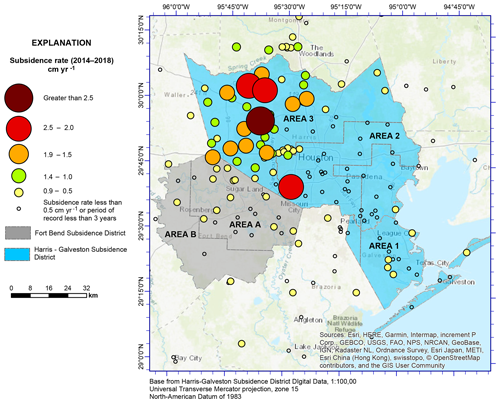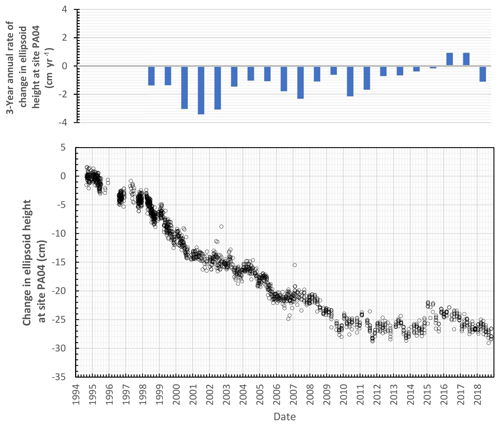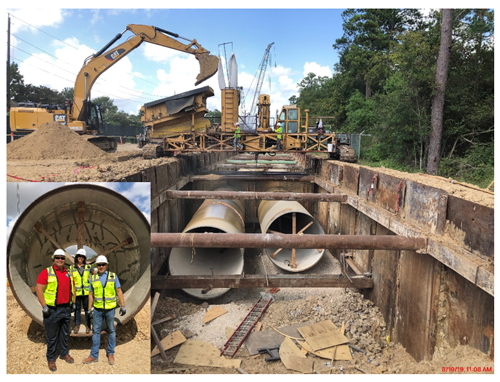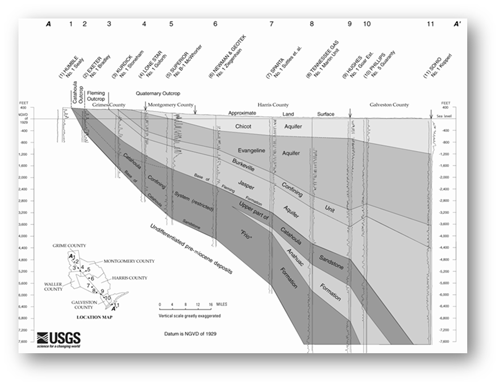In the 1950s the City of Houston began the development of several reservoirs
to provide water for the rapidly growing region within the San Jacinto and
Trinity River Basins. Other entities in the region have also developed
surface water supply from the Trinity, San Jacinto, and Brazos Rivers. The
treatment plants served by these surface water sources are operated by the
City of Houston, City of Sugar Land, City of Richmond, the Gulf Coast Water
Authority, the Brazosport Water Authority, and others.
To meet the Harris-Galveston and Fort Bend Subsidence Districts' regulatory
requirements to convert from groundwater to surface water, the City of
Houston and four regional water authorities – Central Harris County Regional
Water Authority, North Fort Bend Water Authority, North Harris County
Regional Water Authority, and West Harris County Regional Water Authority
(collectively, the “Water Authorities”) are working together to plan,
design, construct, and finance several major infrastructure projects. These
projects are regional in scale and are interrelated. All the projects must
be constructed on the same timeline to ensure that surface water will be
available to northern and western Harris County and northeast Fort Bend
County to comply with the Subsidence District's regulatory conversion
schedule.
The first project is called the Luce Bayou Interbasin Transfer Project
(“Luce Bayou”). Luce Bayou is currently under construction and will pump
untreated surface water from the Trinity River through a series of canals
and water pipelines to Lake Houston (northeast of the City of Houston). Luce
Bayou is being constructed by the Coastal Water Authority, but the project
is being funded by the entities that will be purchasing the transferred
water, which includes the City of Houston and the Water Authorities.
The second project is called the Northeast Water Purification Plant
(“NEWPP”) Expansion Project. The NEWPP expansion is a design-build project
under construction on the banks of Lake Houston. The project will expand the
existing plant's capacity from 3.03×105 m3 per day up to 1.51×106 m3 per day, in order to treat the raw surface water conveyed
by Luce Bayou into Lake Houston (Fig. 4). The City of Houston is the owner
of this project, but the Water Authorities have purchased 84 % of the
capacity of the NEWPP and are each paying their respective shares of the
costs.
The third project is a transmission line called the Northeast Transmission
Line (“NETL”), which will convey treated water from the NEWPP into central
and northern Harris County. The NETL is expected to be primarily a
2.74 m diameter steel water line that is approximately 43.5 km
in length. The City of Houston is the owner of this project, but the North
Harris County Regional Water Authority and the Central Harris County
Regional Water Authority have purchased capacity in the line and are each
paying their respective shares of the costs (the West Harris County Regional
Water Authority and the North Fort Bend Water Authority are also
participating in the initial segment of the NETL).
The fourth project is a transmission line (and two pump stations) called the
Surface Water Supply Project (“SWSP”), which will convey treated water
from the NEWPP into western Harris County and north-eastern Fort Bend
County. The SWSP is expected to be primarily a 2.4 m diameter steel
water line that is approximately 64 km in length. The West Harris
County Regional Water Authority is the owner of this project, but the North
Fort Bend Water Authority has purchased capacity in the line and is paying
its share of the costs.
In addition to the four projects described above, the City of Houston and
the Water Authorities are each designing and constructing their own
distribution systems to convey the treated surface water to their customers.

Figure 2Annual rate of ellipsoid height estimated from available GPS data
measured at monitoring location within the Houston Region, 2014–2018.
(Thompson et al., 2019, base courtesy of © ESRI).

Figure 3Measured and estimated annual rate of change in ellisoid height at
Harris-Galveston Subsidence District monitoring site PA04 located near
Memorial Village, TX, 1994–2019.
Download

Figure 4(main) Photo of construction of dual 2.74 m raw water lines
from Lake Houston to the Northeast Water Purification Plant (courtesy Steve Berckenhoff); (inset)
Subsidence District officials near raw water pipeline (courtesy Harris-Galveston Subsidence District).
Both the NETL and the SWSP are massive transmission lines running through
densely populated and congested areas. The transmission lines must be
installed in narrow easement corridors, which adds to the complexity and
ultimately the cost of the projects. Currently (2019), both the NETL and the
SWSP are under design and are expected to commence construction soon.
Due to the technical and financial challenges associated with these
projects, it is critical for the City of Houston and the Water Authorities
to have regulatory certainty from the Harris-Galveston and Fort Bend
Subsidence Districts. The transmission and treatment capacity have been
sized to meet the current District's conversion requirements in 2025 and 2035.
These interrelated regional projects are planned to be completed by 2025,
when the next conversion requirements of the Harris-Galveston and Fort Bend
Subsidence Districts go into effect. While these projects are time consuming
and costly (the costs are likely to total close to USD 5 Billion), the
City of Houston, Coastal Water Authority, and the Water Authorities have
been able to work together to create economies of scale and maximize
efficiencies. This regional effort could serve as a model for other
locations seeking to address large scale water supply needs.









